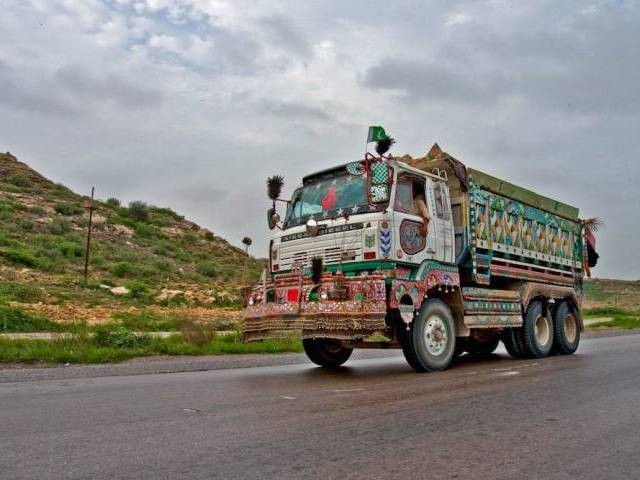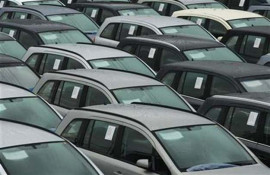
The report suggests that proactive industrial policies must be pursued, which not only focus on upgrading the economy, but also promote the development of production linkages to improve productive capabilities within an economy.
Inflation reined in to stay below 6% target
Therefore, it is essential that exporting industries in Pakistan develop strong production linkages with the rest of the economy and that profits generated by exporters are re-invested in such a way that they drive the profit-investment nexus.
For instance, the growth in modern services must complement the growth in the primary and manufacturing sectors through the enhancement of production and knowledge linkages.
As uncertainties have increased in trading patterns due to slower economic growth and preference for restrictive trade policies across developed trading partners, it is essential that developing countries shift towards production of value-added goods and rely on establishing long-term trading contracts with their buyers and suppliers.
Exports of Pakistan have fallen from over $25 billion in 2013 to less than $22 billion in 2015. Data from the State Bank of Pakistan (SBP) predicts a further slowdown in FY17. On the other hand, the import content of investment spending in Pakistan is increasing, which is widening the trade deficit.
Trading patterns
The World Trade Organisation’s (WTO) World Trade Outlook, published in May 2017, indicated a moderate expansion in global trade in the second quarter of 2017 as trade recovered from the slump of 2016.
However, it is even more essential that Pakistan policy-makers take major action to develop and enhance production linkages across different sectors of the economy in order to reverse the falling trend in exports. As record levels of investments flow into Pakistan through CPEC, the policy-makers must ensure that new investments contribute to generating value addition as well as improving production linkages within the economy.
According to the International Trade Centre’s Trademap.org, the global trade increased to a peak of $19 trillion in 2014 and plummeted to $15.9 trillion in 2016.
Exports of Pakistan peaked at $25.3 billion in 2011, but decreased to $22 billion in 2015. The SBP reported a decrease of 1% in exports for July to April FY17 compared to the corresponding period of FY16.
Although all major groups, namely food group, textile group, petroleum group, and other manufactures have reported a decline in export value, the largest decline was in exports of products such as surgical instruments, cement, engineering goods and petroleum products.
Readymade garments were the only products within the textile group to consistently report positive export growth between FY10 and FY16. On the other hand, exports of raw cotton fell 47%, cotton yarn 14% and cotton cloth 8% for July to April FY17.
Trade gap
One of the major concerns today is the bulging trade deficit as the gap between export receipts and import payments widens. Total import payments for July to April FY17 were $37.8 billion, up 15.5% compared to the corresponding period in FY16.
The increase in import value was reported for all products, including machinery, transportation equipment, textile products, petroleum products and food products.
However, the largest increase was in transportation equipment, followed by food products and petroleum products. There has been a surge in imports of several products that are commonly imported such as textile machinery, power generating machinery, motor vehicles, petroleum products and iron and steel scrap.
Pakistan exported $13.7 billion of textile product in FY15 and $12.76 billion in FY16. Export receipts from cotton, which topped at $479 million in FY12, were only $39 million for July to April FY17.
On the other hand, more than $1 billion worth of raw cotton was imported in FY16, which was twice more than the reported amount in FY15. According to the Pakistan Central Cotton Committee, the lowest domestic production of cotton crop since 1999 was reported in 2015.
'Pakistan’s GDP growth expected to hit 9-year high in current fiscal year'
The fall in cotton production accompanied by an increase in imports of raw cotton suggests lack of production linkages between domestic farmers and textile producers.
Furthermore, it also suggests that the Pakistani variety of raw cotton is likely becoming redundant in the production of textile products as domestic producers are increasingly becoming dependent upon imported varieties.
Although the textile industry faces numerous challenges in terms of energy shortages and lack of cost competitiveness, it is imperative to develop and enhance the production linkages that can contribute to value addition within Pakistan.
The writer is Assistant Professor of Economics and Research Fellow at CBER, IBA
Published in The Express Tribune, June 12th, 2017.
Like Business on Facebook, follow @TribuneBiz on Twitter to stay informed and join in the conversation.


















COMMENTS
Comments are moderated and generally will be posted if they are on-topic and not abusive.
For more information, please see our Comments FAQ